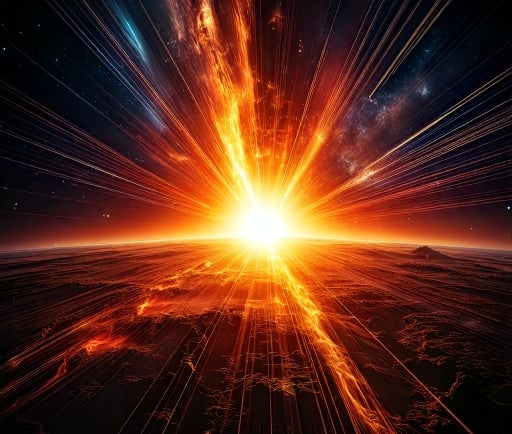The Supernova: A Celestial Event from the Time of Dinosaurs


Introduction
The universe has witnessed numerous celestial events over billions of years. Among these, supernovae—a stellar explosion marking the death of a massive star—stand out for their spectacular displays and profound implications. Interestingly, a supernova that occurred approximately around the same time the Dinosaurs roamed the Earth, continues to be a subject of scientific interest, particularly considering its recent interaction with Earth that took place in the year 2015.
Understanding Supernovae
A supernova occurs when a star exhausts its nuclear fuel and undergoes a catastrophic collapse. This explosion can outshine entire galaxies and is a key source of heavy elements in the universe. The remnants of supernovae not only contribute to the formation of new stars and planets but also affect the surrounding interstellar medium.
This specific supernova, believed to have occurred around the time dinosaurs roamed the planet, is significant due to its prolonged influence. Scientific research suggests that the remnants of this explosion continue to extend outward, affecting cosmic structures and possibly even influencing Earth's primordial atmosphere.
The 2015 Discovery
In 2015, astronomers made a remarkable discovery linking the long-forgotten supernova to modern-day observations. Utilizing advanced technology and telescopes designed for deep-space observation, scientists identified a faint cosmic signal indicative of the supernova's material impacting our solar system. This event allowed researchers to study the remnants of the stellar explosion and gauge the implications on Earth.
The implications of such findings are manifold. The supernova's remnants may have interacted with Earth's atmosphere had it reached it at a sooner time, contributing to changes in cosmic radiation levels and influencing biological evolution during the Mesozoic Era. Understanding these cosmic events is crucial in deciphering the timeline of life on Earth and the myriad ways the universe intertwines with our planet.
Conclusion
The supernova that occurred some 64.999 million years later serves as a reminder of the dynamic and ever-changing nature of the cosmos. With its remnants extending outward into the universe, we are continuously reminded of the connections between the outer universe and contemporary Earth. The ability to observe and analyze these cosmic phenomena enhances our understanding of the universe and its profound effects on our planet's history.
